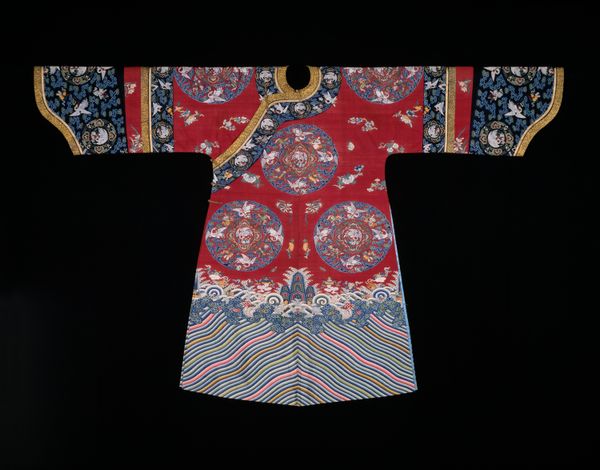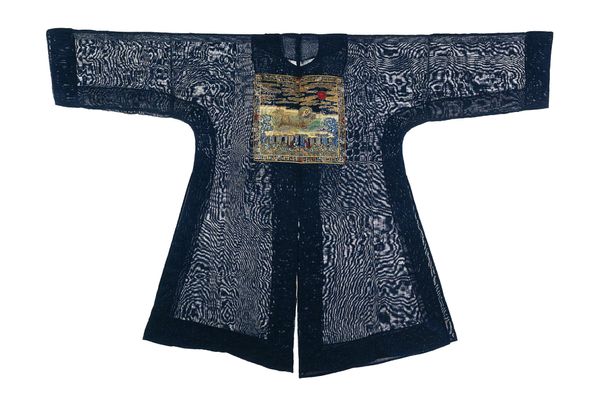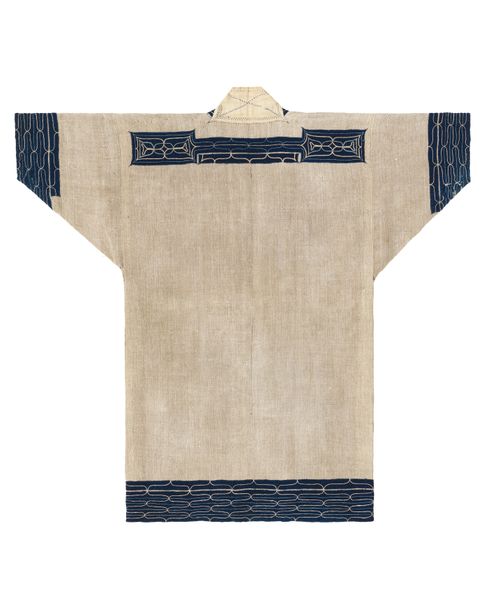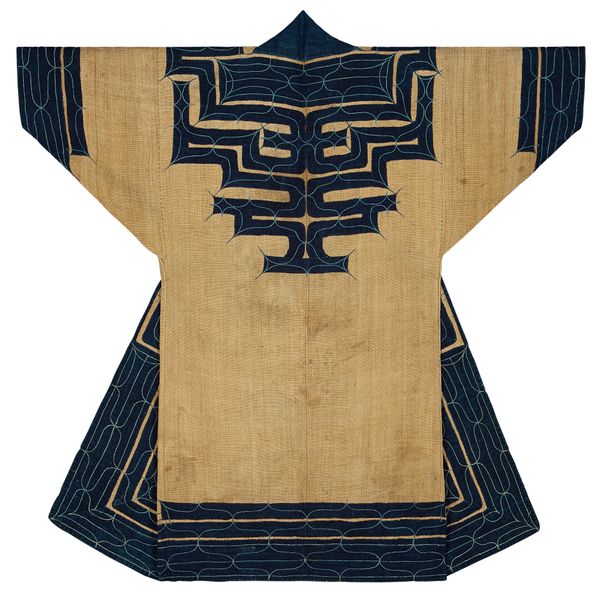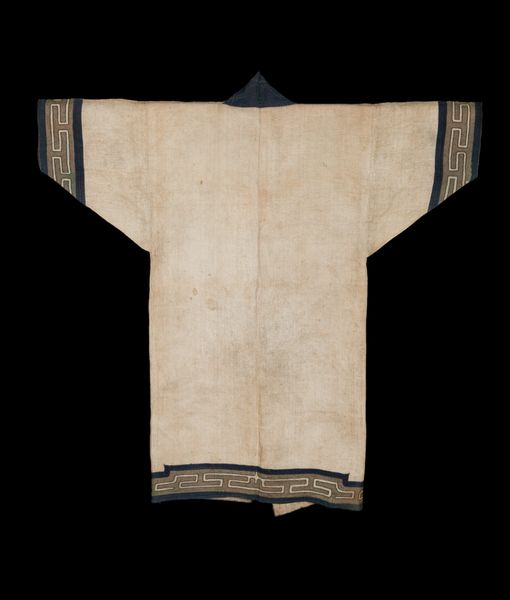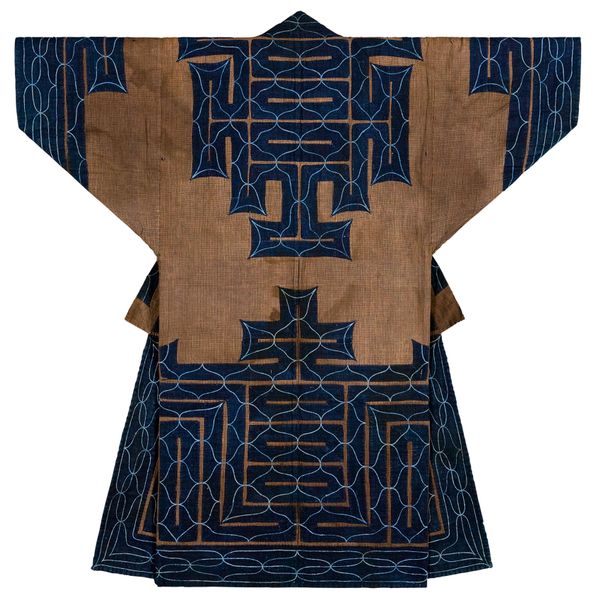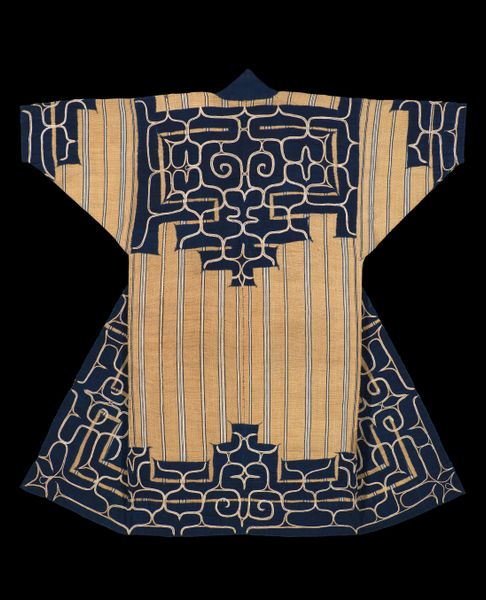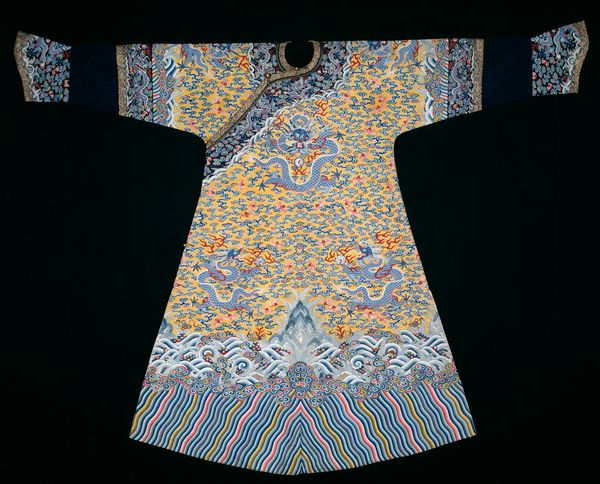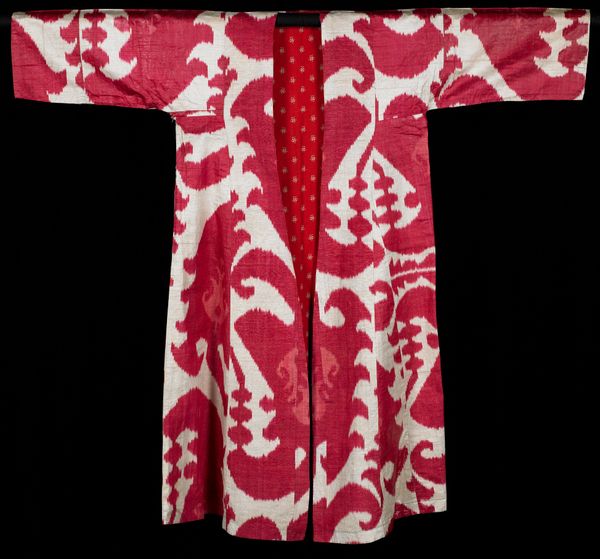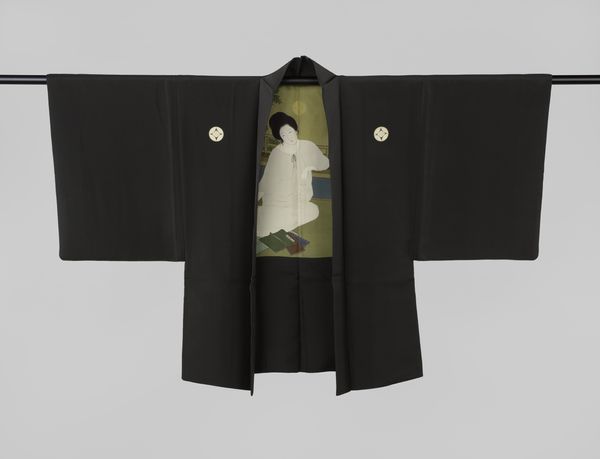
drawing, fibre-art, tempera, print, weaving, textile
#
drawing
#
fibre-art
#
tempera
# print
#
asian-art
#
weaving
#
textile
#
japan
#
orientalism
#
costume
#
neutral brown palette
Dimensions: Overall: 64 3/4 x 48 7/8 in. (164.5 x 124.2 cm) Sleeve length: 37 3/4 in. (95.9 cm); sleeve width: 12 3/4 in. (32.4 cm)
Copyright: Public Domain
Editor: Here we have an *Uchikake* or "Over Robe with Bamboo," dating from between 1700 and 1749. The artist is Gion Nankai and the robe uses weaving, fibre art, drawing and tempera. I find the bamboo design very calming. How do you interpret this work? Curator: Considering the social context of the Edo period in Japan, bamboo motifs signified resilience and integrity. Think about the samurai class, who adopted Confucian ideals. The plant embodies flexibility in the face of adversity, a virtue they deeply admired. This robe likely belonged to a woman of high status, doesn't it make you wonder about her own lived experience and the values she held? Editor: So the bamboo is less about nature, and more about values? Curator: Exactly. And this isn't just about individual morality; it’s tied to social and political stability. The *uchikake* itself was a statement of power and belonging. Notice how the bamboo stalks, while appearing delicate, are quite deliberately placed within the composition? The artist is creating a visual narrative of strength within a structured society. How does its presentation within the Met affect your interpretation, placed as it is separate from a wearer? Editor: That’s a good point; seeing it displayed removes some of that personal connection. I'm viewing it more as art, and less as an intimate belonging of a noble woman. Curator: And that shift in context changes the conversation, doesn't it? We're no longer simply observing a beautiful object; we're engaging with a complex history of social roles, symbolic representation, and artistic expression. Editor: I never would have thought about a robe expressing social ideals. I’ve definitely learned to look more deeply. Curator: Agreed; clothing speaks volumes, then and now.
Comments
No comments
Be the first to comment and join the conversation on the ultimate creative platform.
